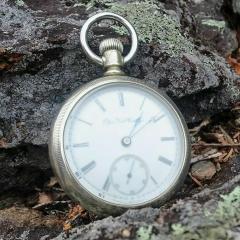-
Recently Browsing
- No registered users viewing this page.
-
Topics
-
Posts
-
I only watched the start, but he's out on magnification by a factor of 10. It's 7X to 45X, not 450X
-
It's one of those tools like screwdrivers and tweezers, where it's worth spending more for the quality. And it gets used all the time. At about £20, the 4040 is not expensive for Bergeon. When putting a watch in dial down, you have to be careful not to catch a sweep second hand, but once secured, life is easy - two hands available to work on the stem.
-
By Neverenoughwatches · Posted
Tbh thats how i would do it. Being a joiner and setting up a few workshops in my time. I would have full worktops all the way around instead of seperate benches, but still a station for each process. Dedicated disassembly/assembly (clean area ) cleaning, repair , polishing and lathework. -
Thanks all. I had ordered a Geiger that's showing up today but was hoping someone might be able to identify the watch to help me get ahead of it, so thank you Geotex. I in no way planned or plan to risk my health over watches and will probably trash this to be safe, it just stupidly didn't register for me how old this watch could be before I had opened the thing up. Sticking to explicitly newer watches going forward. The counter I ordered is a GQ GMC model, which I have seen mentioned and used by many people and seems to be legit. https://www.gqelectronicsllc.com/comersus/store/comersus_viewItem.asp?idProduct=5786
-
By Neverenoughwatches · Posted
I don't have a bergeon holder but thats a really narrow lip. Its the holding and removing the stem at the same time OH. One hand to hold the movement, one to press the release and one to pull out the stem. The op just needs a holder that wont damage the dial or catch the hands.
-








Recommended Posts